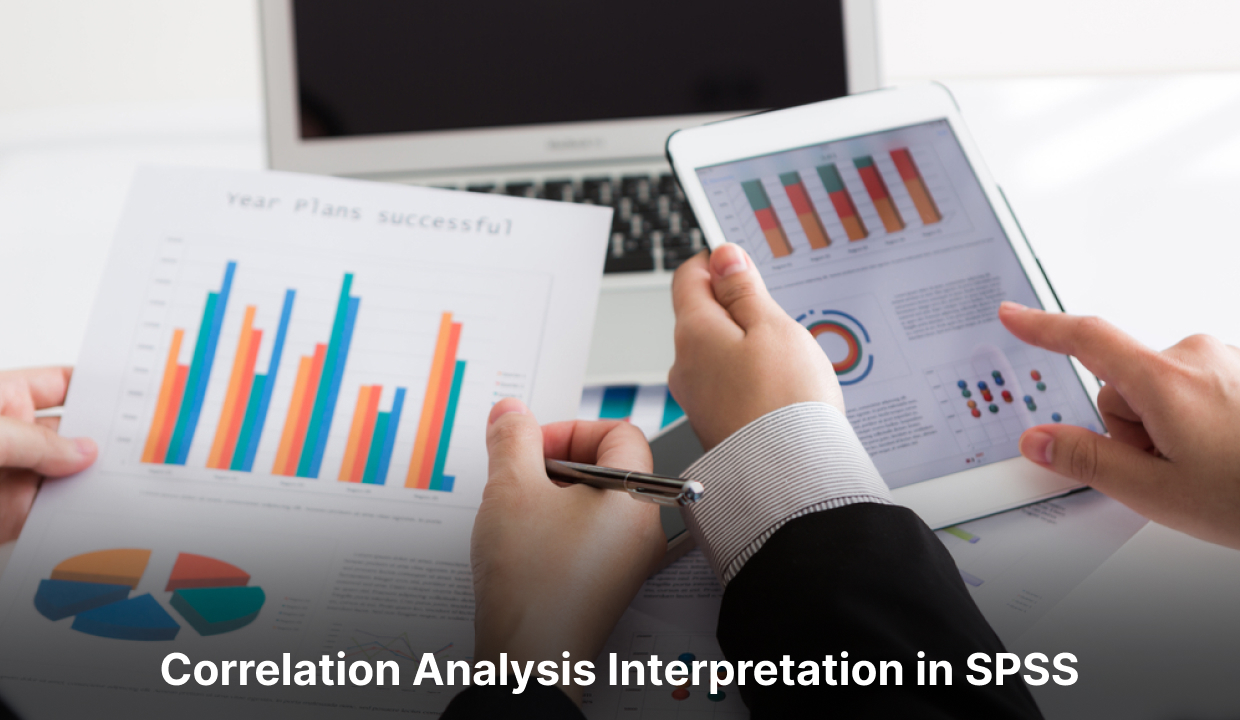-
(+44) 7842798340
Call us for enquiry -
Connect On Whatsapp (+44) 7842798340
Uninterrupted Access 24x7, 100% Confidential. - Connect Now
.jpg)
Correlation analysis, if said simply, can be explained as that specific process that discovers the relationships in-between the data metrics just by looking towards the patterns present in that particular data. In the case of SPSS, correlation analysis is mainly to find out and determine the correlation analysis the procedure is done through the most commonly utilised SPSS statistics. The reason for this is that the SPSS has a standard set of actions or steps that must be followed by the performer to achieve the matrix results of the analysis. In this regard, there is one more analysis apart from the correlation analysis - basic analysis but there is a slight difference in-between the correlation analysis and the basic variance analysis when compared with each other in the performing of the SPSS data analysis. SPSS software data analysis program is used in graphing out the performance process of correlation analysis through the SPSS statistical procedure. Another thing in correlation analysis is that it can be efficiently defined in the process of finding out the exact relation in-between the variable data and existing data.
Related to the correlation analysis, it has three different categories in it – the first set is the positive and negative correlation, the second set consists of simple, partial, and multiple correlations and the third set is a linear and non-linear correlation. The correlation analysis is the process of finding if there is a relationship between different variables and after that determining the relationship, the magnitude of that variable relationship along with its type of action in that relationship is identified. In correlation analysis, there is also another form that is applied to measure how strong a relationship can be in-between two variables, which is the Pearson correlation analysis or the type of Pearson’s R. The correlation analysis, with the SPSS assignment help, acts as a statistical technique to show how two variables can be strongly related to one another and show the degree of association in-between them. In this matter, the detailed study regarding how the variables are correlated with each other is known by the name of correlation analysis. There are various kinds of correlation analysis SPSS matrix categories in which the SPSS software works differently according to the type of statistical data.
Some of the uses of correlation analysis are:
Whenever explaining the correlation analysis SPSS interpretation, it must be said that the most popular correlation analysis type is the Pearson correlation analysis since it is such a correlation coefficient that is most commonly applied in the linear regression of the multiple regression analysis. Also, Pearson's correlation analysis is utilised in SPSS to help for analysing the data that is collected when the analysis is done with two of the quantitative variables from the population. Here, the correlation analysis metrics work by summarising all the raw data which are the inputs of the process, and fed into analysing software with developed and advanced features. Adding to this, the correlation metrics include a list of numbers that are arranged horizontally and vertically in a table presenting the correlation coefficients among the variables. Further, in the correlation analysis variables, the correlation coefficient can be from the range of -1 to +1, along with -1 as an indicator of the perfect negative correlation, with +1 as an indicator of the perfect positive correlation, and lastly, 0 indicating that there is no correlation at all in the statistical analysis of the variables. In this whole process, to know the significance of the correlation by the SPSS correlation analysis, the numbers must measure both the direction and strength of the linear relationship of the two variables.

The correlation analysis is the process of finding if there is a relationship between different variables and after that determining the relationship, the magnitude of that variable relationship along with its type of action in that relationship is identified. Sometimes, the correlation analysis between two variables can either be a positive form of correlation, a negative correlation, or it can be no correlation. In the whole correlation analysis process, to know the significance of the correlation by the SPSS correlation analysis, the numbers must measure both the direction and strength of the linear relationship between the two variables. Further, correlation analysis, with the SPSS help, acts as a statistical technique to show how two variables can be strongly related to one another and show the degree of association in-between them. Also, the correlation analysis metrics work by summarising all the raw data which are the inputs of the process, and fed into analysing software with developed and advanced features. SPSS assignment help to get the best grade in their assignment and can also gain the professor's attention.